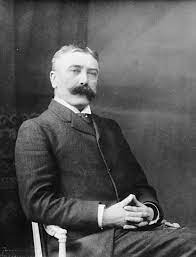Saussure, Ferdinand de

Bio: (1857–1913) Swiss linguist, semiotician, and philosopher. Saussure got his Ph. D. at University of Leipzig. After that he taught at École pratique des hautes études, in Paris for ten years, and in 1891 he become a professor of comparative philology at the University of Geneva, where he stayed for the rest of his life. Saussure is most known for the book Course in General Linguistics (1916, in French), which was a posthumous compilation of his lectures at the University of Geneva during 1907–1911, edited by his former students and junior colleagues. This book presents Sussure’s approach that known as “structural linguistics”.
For Saussure language is a system of interrelated terms, what he called ‘langue’ (language), and is contrasted by ‘parole’ (speech), which relates to individual speech acts or speaking in general. A specific Langue is compromised of supra-individual and underlying code that is embedded in the minds of speakers of a certain language, and which enables common understanding between them. The analysis of this shared system of rules is the central object of linguistics. The language system has two types of relationships: ‘syntagmatic’ (items are arranged in consecutive order) and ‘associative,’ (deep and not directly observable grammatical and semantic relations). Saussure also makes a crucial distinction between a “sign”, “signified”, and a “signifier”. Both a signified and a signifier together make a sign, while the relation between them is always arbitrary. The signifier is a sound or an image that represents something that is being signified (a concept, idea, object, etc.). The signifier is a physical manifestation of a mental concept, a signified. In Saussure’s linguistics, the whole language is ‘a system of (arbitrary) signs’. The ideas of Saussure were crucial for the formation of the interdisciplinary field of semiotics.
Main works
Course in General Linguistics (1983, in French 1916).

